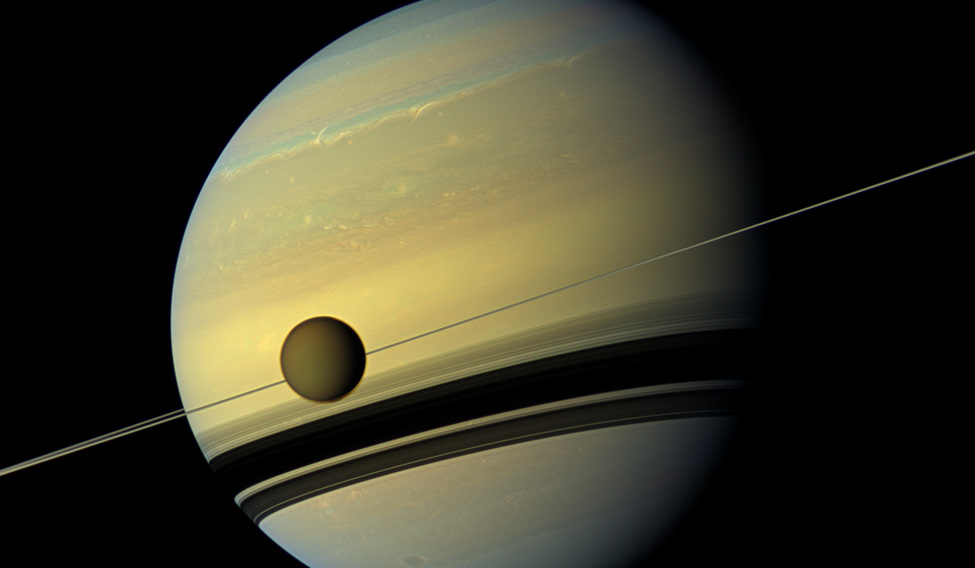Using data from NASA's Cassini spacecraft, astronomers have created a global map of Saturn's moon Titan and found that its geographical features are similar to those seen on the Earth.
The map combines all of the Titan topography data from multiple sources. It revealed several new features on Titan, including new mountains, none higher than 700 meters.
The map also provides a global view of the highs and lows of Titan's topography, which enabled the scientists to confirm that two locations in the equatorial region of Titan are in fact depressions that could be either ancient, dried seas or cryovolcanic flows.
It revealed that Titan is a little bit flatter―more oblate―than was previously known, which suggests there is more variability in the thickness of Titan's crust than previously thought.
"The main point of the work was to create a map for use by the scientific community," said Paul Corlies, from Cornell University in the in the US.
The data set can be downloaded in the form of the data that was observed, as well as that data plus interpolated data that was not observed.
The map will be important for those modelling Titan's climate, studying Titan's shape and gravity, and testing interior models, as well as for those seeking to understand morphologic land forms on Titan.
Another study found three important results using the new map's topographical data.
Researchers also found that Titan's three seas share a common equipotential surface, meaning they form a sea level, just as Earth's oceans do.
Either because there's flow through the subsurface between the seas or because the channels between them allow enough liquid to pass through, the oceans on Titan are all at the same elevation.
Researchers found that the vast majority of Titan's lakes sit in sharp-edged depressions that "look like you took a cookie cutter and cut out holes in Titan's surface," said Alex Hayes, assistant professor at Cornell.
The lakes are surrounded by high ridges, hundreds of meters high in some places.
The lakes seem to be formed the way karst is on Earth, in places like the Florida Everglades, where underlying material dissolves and the surface collapses, forming holes in the ground.
The lakes on Titan, like Earth's karst, are topographically closed, with no inflow or outflow channels. But Earth karst does not have sharp, raised rims.





